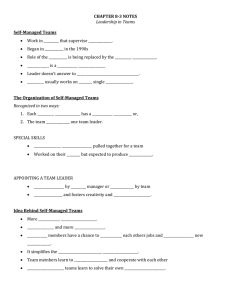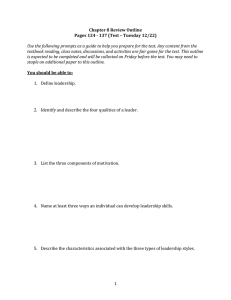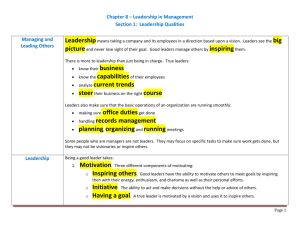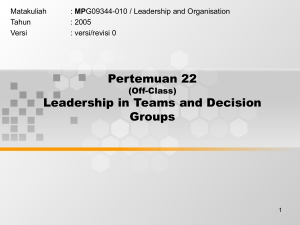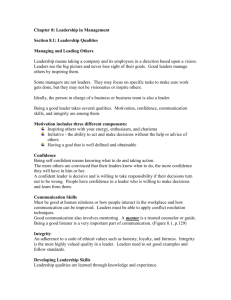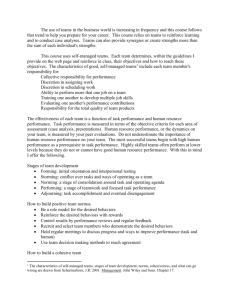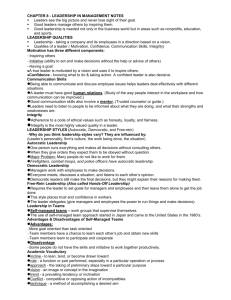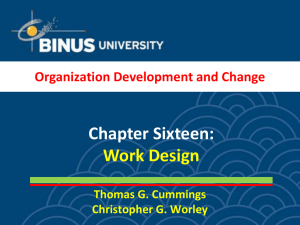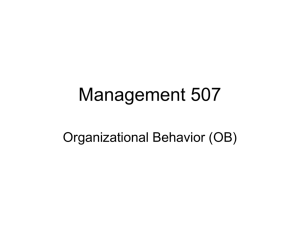Chapter 16 Work Design Multiple Choice Questions
advertisement
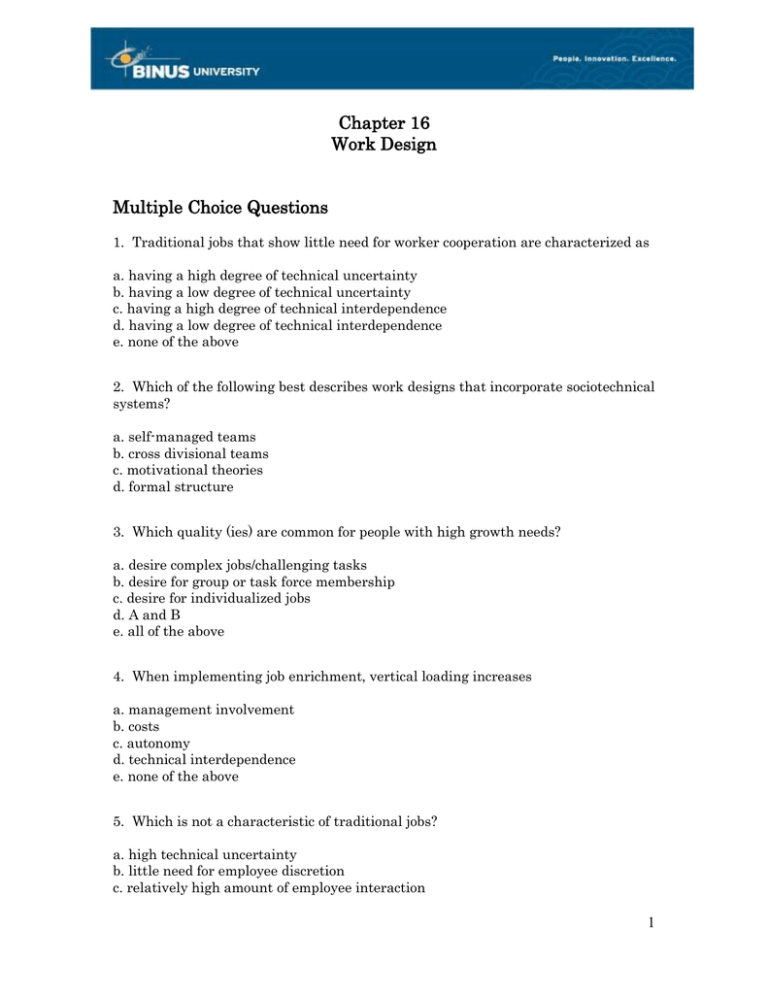
Chapter 16 Work Design Multiple Choice Questions 1. Traditional jobs that show little need for worker cooperation are characterized as a. having a high degree of technical uncertainty b. having a low degree of technical uncertainty c. having a high degree of technical interdependence d. having a low degree of technical interdependence e. none of the above 2. Which of the following best describes work designs that incorporate sociotechnical systems? a. self-managed teams b. cross divisional teams c. motivational theories d. formal structure 3. Which quality (ies) are common for people with high growth needs? a. desire complex jobs/challenging tasks b. desire for group or task force membership c. desire for individualized jobs d. A and B e. all of the above 4. When implementing job enrichment, vertical loading increases a. management involvement b. costs c. autonomy d. technical interdependence e. none of the above 5. Which is not a characteristic of traditional jobs? a. high technical uncertainty b. little need for employee discretion c. relatively high amount of employee interaction 1 d. routine and repetitive e. none of the above 6. When technical interdependence is low and uncertainty is high, and where people have low social needs yet high growth needs, which work design would you recommend? a. traditional jobs b. traditional work groups c. enriched jobs d. self-managed work groups 7. Which statement is not characteristic of self-managed work groups? a. team members learn a variety of skills b. team members are paid on the basis of their degree of effort and individual accomplishment c. team members set their own production goals d. the team can control member’s task behaviors e. none of the above 8. Self-managed work group supervisors may feel a. ambiguity about responsibilities and authority b. a lack of personal and technical skills to deal with the group c. a lack of organizational support d. a lack of attention from higher management e. all of the above 9. The engineering approach produces _____________ and ______________: a. traditional jobs/efficient performance b. innovation/job satisfaction c. motivation/job enrichment d. motivation/autonomy e. innovation/ autonomy 10. Which is not a core dimension of jobs? a. skill variety b. task identity c. work participation d. autonomy e. feedback from the work itself 2 11. Which of the following place constraints on job enrichment interventions? a. the technical system b. the environment c. the control system d. A and C e. A, B and C 12. Which statement is “true” of the sociotechnical approach to work design? a. It is decreasing in popularity. b. It is generally associated with self-managed work groups c. It is more concerned with outputs and productivity than worker satisfaction d. It is unrelated to open systems concepts. 13. Which is not a principle of sociotechnical systems design? a. compatibility b. joint optimization c. minimum critical specification d. integration e. boundary management True/False Questions 14. Professional work that requires high levels of employee self-control usually involves low degrees of technical uncertainty. 15. Employees with low social and personal growth needs are not very good employees, and should be regarded as “expendable.” 16. Job enrichment always increases employee satisfaction. 17. The degree of autonomy affects the employee performance and satisfaction. 18. “Vertical loading” of a job results in combined tasks and increased autonomy. 19. Successful work designs reward seniority and “company loyalty.” 3 20. Counselor, or facilitator, would be a more appropriate title than self-managed work group leader. 21. There is little evidence to support job enrichment programs. 22. Diagnosis is not as critical in job design as in other OD interventions. Essay Questions 23. Describe the motivational approach to job design. What are the key dimensions that lead to high work quality and internal motivation? 24. Discuss the technical and personal-need factors that affect work design success? 25. Discuss sociotechnical systems theory and contrast it with the open systems theories of organization development? 26. Describe self-managed work groups and the situations for which they are best suited. Why are self-managed work groups more likely to be found in high involvement plants? 4
